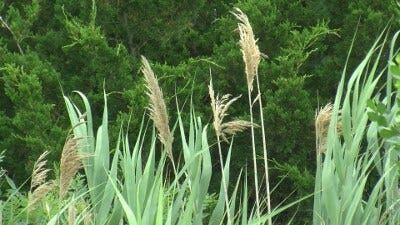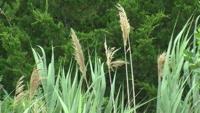REHOBOTH BEACH, Del.- Phragmites are an invasive plant species that exists in two forms in the United States. There is an invasive European strain and also a native strain. The European strain has disturbed many areas on Delmarva by displacing native plants that grow near it.
Phragmites can reach up to 12 feet and grow just about anywhere, but exist largely along water banks. They started out as a material used for roofs and packing. The Delaware center for Inland Bays called it "the primary invader of any disturbed ground."
Hope Pritchard, of Rehoboth Beach, had her entire backyard invaded by phragmites. She knew something had to be done about it, because she said they appeared as if they were coming to get you.
The Delaware Phragmites Cost Share program helps landowners like Hope cover the cost of phragmites eradication. Unfortunately, Hope was not a candidate.
Pritchard said, "I called the state about it and apparently the size that we are and the proximity to buildings were to close for them to do it by helicopter."
Hope reached out to Todd Fritchman from Envirotech for a solution. She found out the application of a special herbicide is required.
Fritchman says it's a tough job getting permanent control over phragmites, but for Envirotech its a good financial opportunity.
"I like the opportunity that it provides us as a vegetation management corporation, but I don't like the plant because I understand the damage it can do," Fritchman said.
Roy Miller from the Center for Inland Bays said the problem is no worse than it was this time last year.
"It's a plant that has been invading the Eastern seaboard for quite a while so it doesn't fluctuate that much due to weather events," Miller said.
Despite the best efforts of many people, phragmites are a growing problem that will not be gone for good anytime soon.






